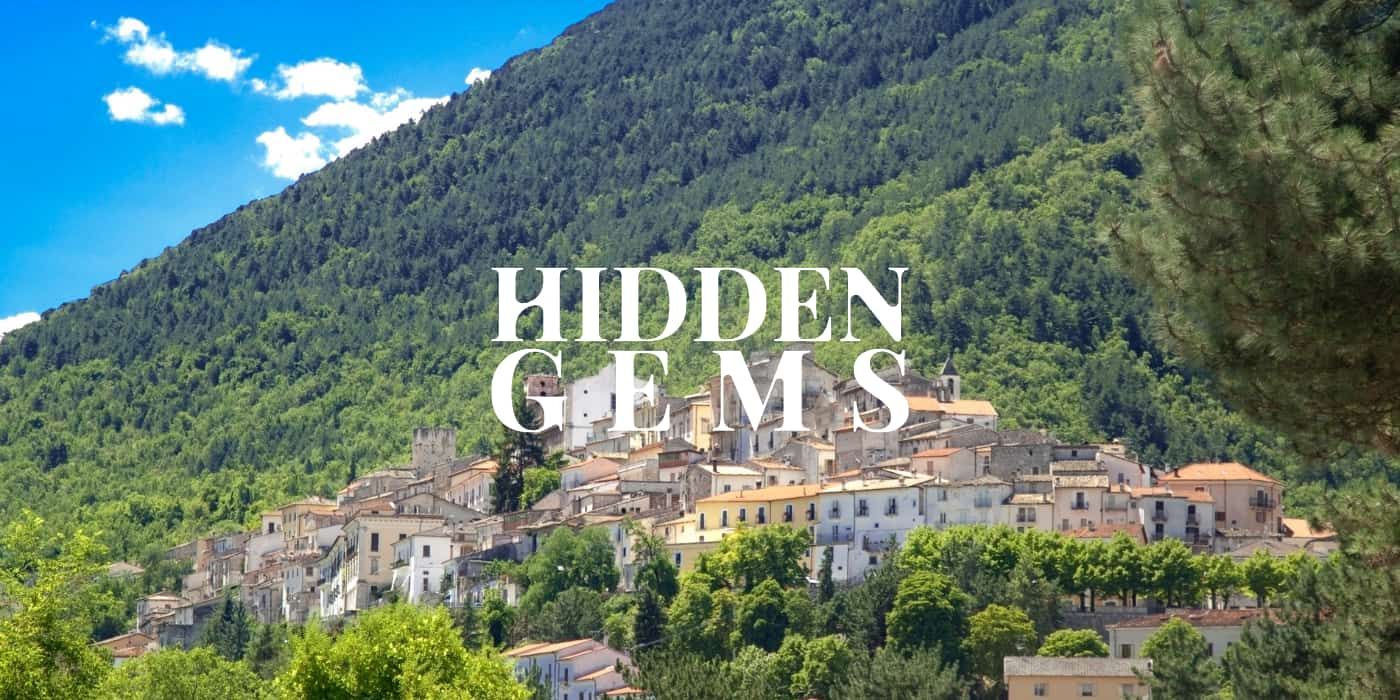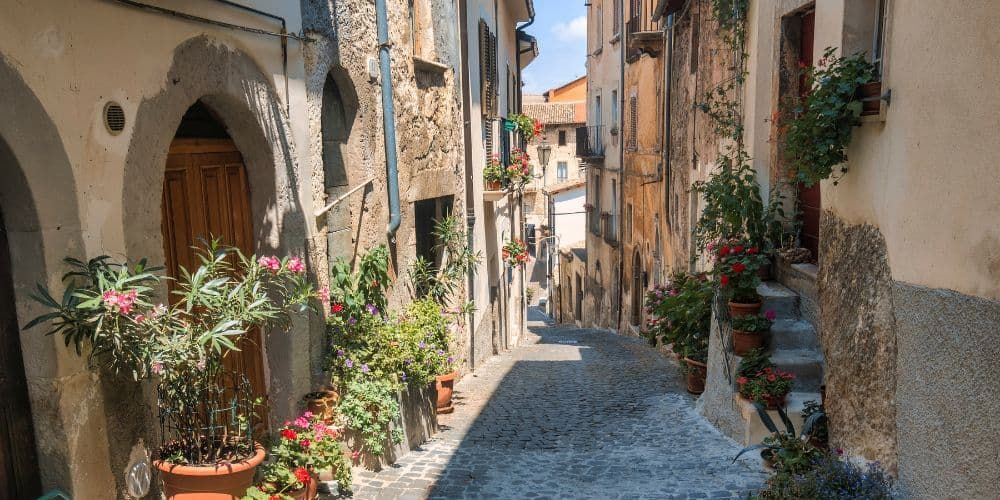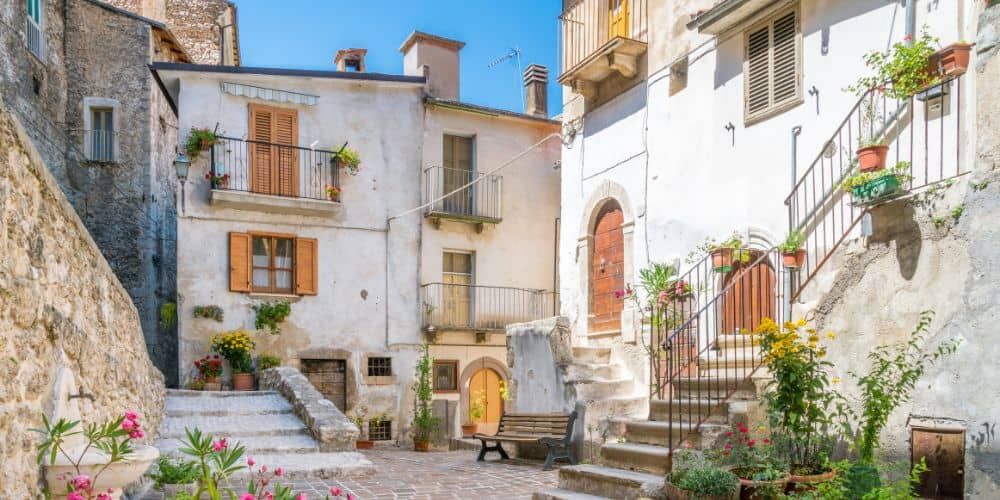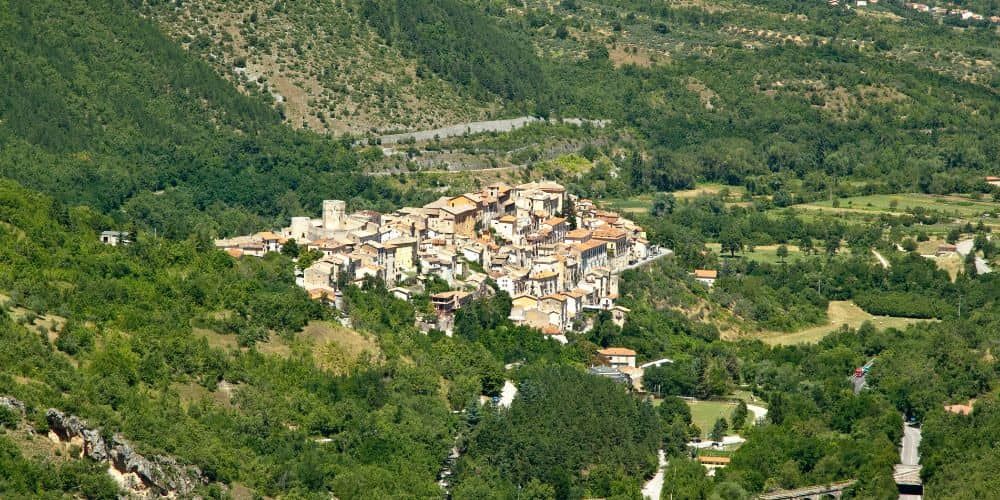A gem so hidden that it is rather difficult to glimpse Pettorano sul Gizio from the road. A few fallen leaves, a few picturesque buildings, and the lush nature of the mountains certainly do not prepare one for the scenery offered by one of Italy's Most Beautiful Villages, located in the heart of the province of L'Aquila.
Romantic and poignant, this village envelops its visitor in a tender embrace that cannot end until one has walked every narrow street and admired every glimpse.
Pettorano sul Gizio really is like that: a gem so enchanting that we really couldn't resist telling you about it here.

What to see in Pettorano sul Gizio, the enchantment of a village hidden by the Abruzzo mountains
First of all, why such a peculiar name?
Pettorano seems to derive from "pectoral", because of the particular configuration of the village, which seems to be made like breastplates. Other interpretations want it to come from "pettorata," or "steep slope." In fact, as soon as you get here, you fully understand why.
Gizio, on the other hand?
Ovid already sang of the beauty of these places traversed by the Gizio River. We are in fact in the Monte Genzana Alto Gizio Regional Nature Reserve, established in 1996. The entire village is wrapped up in this protected area and enhances its beauty to the fullest.
So, you may have already figured it out. A trip to Pettorano sul Gizio will tell you about history and architecture, but it cannot leave out nature. Such lush nature that you can explore thanks to the myriad of trails and hikes that furrow this area.
A walk through the historic center
The historic center is fully affected by its medieval origin.
Pettorano could once be accessed through a system of 6 open gates in the city walls. Five of these gates remain, the most beautiful of which is Porta San Nicola with a 17th-century fresco depicting Santa Margherita holding the village.
Among religious buildings, certainly interesting to visit are the church of San Nicola located outside the walls and built as early as 1112, and the church of Madonna della Libera.
Among the civil buildings, on the other hand, we cannot fail to mention the Cantelmo Castle, which has recently been renovated and can be visited today. Two circular towers still stand today, along with the heart of the castle, the pentagonal-based tower that watches over the village.
The Ducal Palace, the private residence of the family that owned the castle, is also truly splendid and is built around a square courtyard that is now Piazza Zannelli. Right from here, the view from the open side of the square opens wide into the green mountains.
There are numerous palaces, such as Palazzo de Stephanis or Palazzo Croce.
However, what enchants the most about this fairy-tale village are definitely the little houses that are piled one on top of the other among the streets of the center, inviting the eye to observe the beauty of the flowered balconies and furnishings so peculiar.
The trails of Pettorano sul Gizio
Visiting Pettorano without exploring its trails would perhaps be reductive.
There are of all kinds, lengths and difficulties, and they run through places where nature and history have intertwined many times.
First of all, the Trans-Siberian Railway of Italy, which connects Sulmona (Abruzzo) to Isernia (Molise), passes through this very area. Inaugurated in the late 19th century, this railway line was soon named after the far more famous Russian railway because of the snow that once abounded in these places, providing a Christmas landscape for many months of the year.
A famous hike is also the loop trail of about 6 km that leads to the discovery of Cantelmo Castle. The trail is of medium difficulty and takes at least 2 hours and 40 minutes to complete.
Another rather famous trail is the Mount Mattone trail (1,500 meters), and it is quite challenging (about 15 km). In the course of the trail you can enjoy magnificent views of the Camosciara Nature RIserva.
The Mills of Pettorano
This fairy-tale village is also famous for its mills. Many can be found along the course of the Gizio River and date back to the pre-industrial period.
The Cantelmo Mill is among the best-preserved buildings. The Mulino Comunale and the Mulino de Stephanis, on the other hand, suffered from the popular uprisings of 1871, caused by the introduction of the milling tax introduced by the fledgling Italian state. Today, few ruins remain of these two mills. The path within the Industrial Archaeology Park of Pettorano sul Gizio, however, is really interesting and well-developed, and allows for a better understanding of the village's past.
The events
Can you really know a place without knowing the traditions of the people who live there?
Numerous events dot the calendar of Pettorano sul Gizio.
One of the most important is the Sagra della Polenta Rognosa, the typical local dish, celebrated at the turn of the new year. Polenta plays an important role here in Pettorano and was prepared after flour was ground in mills located along the banks of the Gizio River.
Preparation required a great deal of strength on the part of the "polenta maker" and required that, once cooked, the polenta be tossed onto a dishcloth, cut into slices and placed back into the hot pot.
It is eaten with ingredients with strong flavors, such as sausage, garlic, and pecorino cheese, and was once the star of all meals.
There are numerous festivals and events that are still handed down to us after centuries, such as Capetieme, in the period from November 1 to 11 (St. Martin's Day), and which celebrates the peasant New Year, or the New Year's Eve Serenade, celebrated on the night of December 31.
Where the town is located and how to get there
Pettorano Sul Gizio, L'Aquila (Abruzzo), Italy
Beautiful Pettorano sul Gizio is tucked away in the mountains of Abruzzo.
The nearest highway exit is Bussi/Popoli.
If you want to go by train, the nearest train station is Sulmona, from which you can leave for Pettorano by bus (ARPA or Satam lines).
The nearest airports are those of Pescara (80 km), Naples (160 km) and those of Rome (Ciampino and Fiumicino, 170 and 190 km respectively).
About the author
Written on 04/08/2023






Elisa Borgato
Pettorano sul Gizio is among the most beautiful towns you’ll see in Italy. Discover with us all the things you can do and visit here!